Energy Efficient Homes
The following guidance seeks to provide information on ways you can improve your home energy efficiency and stay warm. Before considering the installation of renewable energy systems, it is important to maximise heat conservation in your home. This is best achieved through insulation, air tightness, and optimised design to capture as much of the sun as possible. This will help improve energy efficiency and reduce ongoing maintenance costs.
You will find advice on the causes of dampness and condensation too, with hints and tips to help tackle this problem. Dampness and condensation problems can often be linked to poorly insulated, or poorly heated homes, so improving energy efficiency can also solve condensation problems, although it is important to maintain adequate ventilation too.
The following ten top tips for energy efficient households will help save you energy and money on bills:
1. Turn off all appliances when not using them. Don’t leave appliances on standby and prevent charging them unnecessarily. Turn off lights when you leave a room. Making these changes could save you between £45 and £80 a year. When replacing appliances, choose a model with a high energy efficiency rating
2. Ensure you understand your heating controls. Set them to heat only the rooms you need, when you need them, and not above the required temperature. Heating controls for central heating systems should include a timer, room thermostat, and thermostatic radiator valves. A comfortable temperature is between 18-21°C. Turning down the thermostat by 1°C can save you as much as £75 per year. You should also seal your windows and doors to make sure you’re not losing heat due to draughts. Closing your curtains at dusk can also help stop heat escaping.
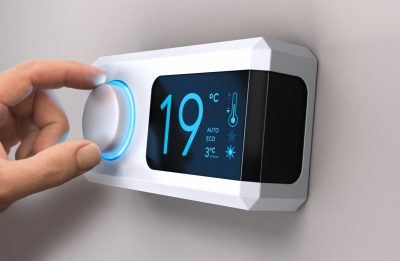
3. Take care in the kitchen. Using kitchen appliances more carefully could save you extra each year:
- Boil the kettle for the correct amount of water you need.
- Use a microwave if you regularly reheat meals, rather than using energy to heat your oven.
- Ensure saucepans size match the burner on the hob and cover your food when cooking to keep heat in.
- Use your dishwasher only when full or if you don’t have one use a bowl to wash up rather than running a tap.
- Fix leaking taps and make sure they are fully turned off.
- When washing, try to fully load the appliance. One full load uses less energy than two half loads.
- Set your washing machine to 30˚C for washing lightly soiled clothes uses less energy to heat the water.
- These small steps could help you save a further £43 a year.
4. Hang your clothes out to dry. Dry clothes outside if possible or on a clothes horse next to a radiator. Wash your clothes at a lower temperature to use less energy.
5. Update your heating system:
- Check whether you could save money and carbon by switching to a low carbon heating system, such as a heat pump which is more efficient than a gas boiler. However, initial costs can be expensive. Seek advice on how efficient a heat pump would be in your home from Home Energy Scotland on Freephone 0808 808 2282 to understand how this may impact your heating bills.
- If your boiler is more than 15 years old, it’s worth replacing it with a more modern energy efficient A-rated model. The Energy Saving Trust says replacing a G-rated gas boiler with an A-rated one, plus installing thermostatic radiator valves, typically costs around £2,300 but could save you up to £315 a year.
- Alternatively, fitting new controls to your boiler, like a programmer, a room thermostat and thermostatic radiator valves, can help control your heating more efficiently. This could save you between £70 and £150 a year.
6. Use energy efficient lighting. LED bulbs are the most efficient and durable lighting technology. By switching just one traditional bulb to an energy efficient one it will save you £3 a year or £45 over the age of the bulb. Now, imagine the savings you would make if you switched your entire home to energy efficient light bulbs. The savings made with the latest LED bulbs are so good that you may recover their cost in a couple of months.
7. Draught-proof. Homes can lose heat through gaps around windows and doors, floorboards, etc. These areas can be sealed off to save energy and reduce costs. Most DIY stores will stock draught-proofing products which are inexpensive and easy to install. If you have open, unused chimneys in your home without a proper draught excluder, it is like leaving a window open all year round. Invest in a proper chimney balloon – with the money saved through losing heat up the chimney it will pay for itself pretty quickly. By excluding all your draughts, you could save between £20 to £30 a year.
8. Insulate your home. Good insulation is key to making your home more energy efficient and it often makes sense to upgrade your insulation before you upgrade your heating system. A quarter of heat is lost through the roof in an uninsulated home and about a third through the walls. It’s worth considering whether you can spend a few hundred pounds getting a professional in to fully insulate your property. Insulating your loft could save the average bill payer between £120-£225 a year.
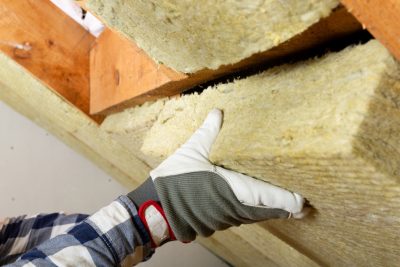
9. Fit a water-efficient shower head. If you have a shower that is fed by a boiler or hot water tank (not an electric shower), a family of four could save £65 a year by fitting a water-efficient shower head.
10. Use a laptop at home. Working from home has become the norm for a lot of people. Whilst your laptop will use just 75 kWh per year, a desktop can use up 194 kWh.
Smart meters are the new generation of gas and electricity meters which will replace the traditional meters in our homes. Every home in England, Scotland and Wales will be offered a smart meter by their energy supplier, at no extra cost.
Smart meters will enable you to see exactly how much energy you are using, as you use it, and what it is costing in pounds and pence. This will help you to stay more in control of your energy use.
Smart meters take regular readings and share these wirelessly, through a secure network, with your energy supplier. You can choose to send this information daily, weekly or even half hourly. This means your bills will always be accurate, not estimated, and you will no longer need to have manual meter readings.
Along with your smart meter, you will receive a smart meter display, a digital device that sits in your home. This shows exactly how much energy you’re using and what it is costing in near real time. In the future, smart meters will make switching between suppliers, or between credit and prepay, quick and hassle free. If you are a prepay customer, you will also be able to top up online or via mobile phone.
Energy suppliers are installing smart meters for their customers at different times. When you are eligible to get a smart meter can depend on many different factors, such as the age of your existing meter and the type of housing you live in. Your supplier will be in touch to arrange an appointment when they are ready to install yours.
Smart Energy GB is the independent, not-for-profit campaign for the national smart meter rollout. It is their task to help everyone in Great Britain understand smart meters, the national rollout and how to use our new meters to get our gas and electricity under control.
Find out more information about smart meters and how they can help you by visiting smartenergyGB.org

Before you commence making changes to your home to make it more energy efficient, it is essential to conduct an energy audit to find out how much energy you use in what areas of your home. This can be done through a) Private Energy Audit, or b) DIY Energy Audit.
There are several organisations who offer home energy efficiency audits which will highlight where you could save energy and money. It is essential to ensure the audit is completed by an organisation who is suitably qualified. Domestic Energy Assessors (DEAs) can provide an Energy Performance Certificate (EPC) and on the spot advice on how to insulate and heat your home more efficiently.
As a renter you must get your landlord’s permission before you make improvements to your home. If your EPC says your home is rated in band F or G, your landlord must make some improvements. You can check your home’s EPC rating on the Simple Energy Advice website.
Contact your landlord and ask them to make improvements to your home. Explain it is their responsibility to ensure the EPC rating is at least band E. If your landlord refuses to make improvements, contact Perth & Kinross Council at [email protected]. However, your landlord won’t have to make improvements if your home is exempt from the ‘minimum standard’ of energy efficiency. You can check if your home is exempt at the PRS exemptions register.
You can conduct your own simple walk-through to spot problems in your home, though this may not be as thorough as a private energy assessment. You should keep a checklist of areas you have inspected and problems found.
Locate air leaks. You may already know where some air leakage occurs in your home. It is necessary to find all gaps to properly air seal your home. Indoor air leaks could include gaps along the baseboard or edge of the flooring and at junctures of the walls and ceiling. Other areas to check include windows, doors, lighting, plumbing fixtures, switches, fireplace dampers, and electrical outlets. Outside of your home it may include areas where two different building materials join.
To examine other weak spots where there might be air leakage, use a lit tealight candle and place it next to the area you’re investigating. An unsteady flame means that you need to insulate gaps. Once all leaks have been identified, they can be sealed with the appropriate material e.g. caulk. Be aware that some material caulks are flammable and you should always read the packaging carefully to be certain of what you are dealing with.
Check insulation levels. Heat loss through the floor, ceiling, and walls can be great if the level of insulation is below the recommended minimum. If you have an older home, levels of insulation may be inadequate. Investigate what’s going on in your loft and behind walls.
Assess your heating and hot water systems. An increase in your heating bills may indicate your oil or gas boiler is needing upgraded or serviced. Bleeding and cleaning radiators regularly will help maintain your heating systems efficiency. If you use an air con system to heat/cool your home, cleaning and changing the filters regularly will make them more energy efficient.
Change light bulbs. Examine the light bulbs in your house and replace inefficient ones with energy saving bulbs. Also look for ways to use lighting controls such as sensors, dimmers, or timers to reduce lighting use.
Appliances and electronics. The appliances and electronics you choose and how you use them affect your energy use and costs. There are several ways to estimate how much electricity your appliances and home electronics use such as using an electricity usage monitor to get readings of how much electricity an appliance is using. Also consider investing in new, more efficient appliances (e.g. electrical heating devices, dishwashers, etc) to save you money long-term.
Consider strategies to save energy. Unplug items when not in use and utilise smart home energy management systems to monitor and control energy consumption of devices.
Whether you own your home or are a landlord, the EPC certificate rates your property's energy efficiency and will provide suggestions for improvements to your property and the expected financial payback periods of these returns. The scale ranges from an ‘A’ rating being the most energy-efficient, to a ‘G’ rating being the least energy efficient. Currently, domestic private rental properties are required to reach EPC ‘E’ rating at the minimum.
However, from 2025 all newly rented properties are required to have EPC ‘C’ at the minimum, whilst existing tenancies have until 2028 to reach this level. Making these changes will help ensure homes are energy efficient and will help in meeting the government’s net zero targets.
Insulation Improvements
New homes are built with materials and technologies that make them very energy efficient. The majority of older homes have not been built to be as energy efficient, which means most of them lose heat. Fitting effective draught-proofing to your home can be easy to do and will save you money in the long term.
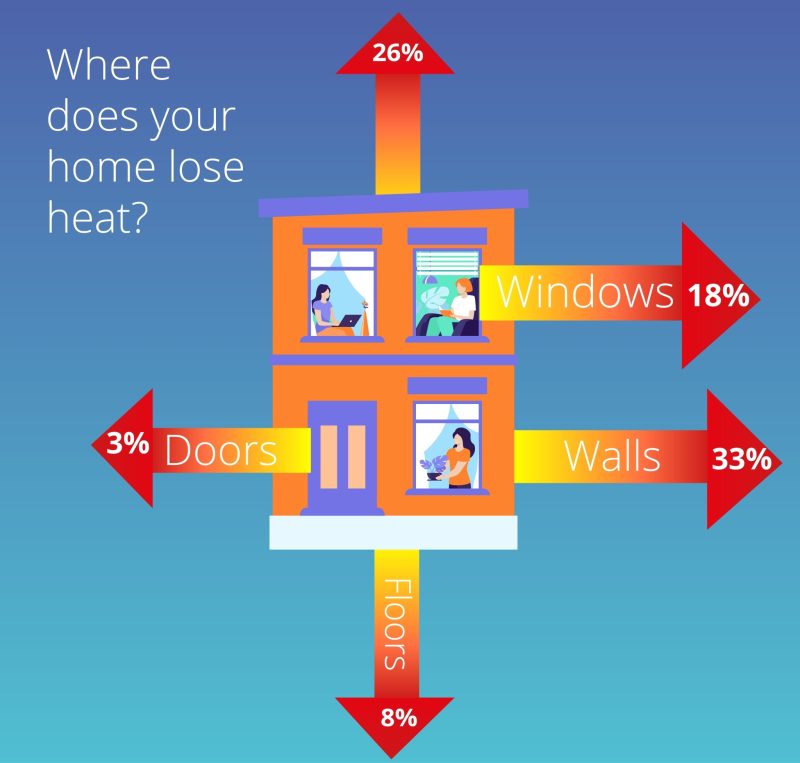
Overview of where your home loses heat (Infographic available in PDF accessible format)
f you have no loft insulation, over a quarter of all your heat will be lost through your roof every year. The current recommended depth for loft insulation is 270mm and it will last for around 40 years. Insulating your loft or attic is easy and could save you around £180 a year. While loft insulation is a bit more expensive than some of the other measures described, it will pay for itself over and over again.
Free loft insulation schemes are sometimes available from the government, by energy companies or your local authority, so it’s always worth calling Home Energy Scotland on freephone 0808 808 2282 or visit www.homenergyscotland.org to see if you qualify for any schemes currently available in your area.
If your home was built after 1920, the chances are that its external walls are made of two layers with a gap, or cavity, between them. Cavity wall insulation fills that gap, keeping the warmth in and saving you energy and money. It can also help reduce condensation inside the home.
Cavity wall insulation typically saves up to £250 a year and though it can be a bit more expensive to install, with the money you save on fuel bills it will pay for itself within three years. There are also often schemes being run by the government or local authority that could offer free cavity wall insulation, so it’s worth calling Home Energy Scotland on freephone 0808 808 2282 to find out.
Cavity wall insulation MUST be installed by a registered installer.
If your home was built before 1920, its external walls are probably solid rather than cavity walls. Solid walls do not have a gap like cavity walls, and can lose twice as much heat.
The good news is that they can be still be insulated – either from the inside or the outside. This will cost more than insulating a cavity wall, but the savings on your heating bills will be bigger too.
External wall insulation involves fixing a layer of insulation material to the wall, then covering it with a special type of render or cladding. The finish can be smooth, textured, painted, tiled, panelled, pebble-dashed, or finished with brick slips. As well as keeping your home warmer, it also renews the appearance of your home.
Internal wall insulation is done by fitting rigid insulation boards to the wall, or by building a stud wall filled in with mineral wool fibre. While it is cheaper than external wall insulation, it can be disruptive, requiring kitchen and bathroom units, skirting boards and doorframes to be removed then reattached. However, it can be done room by room.
Depending on your type of property, either internal or external wall insulation can save you up to £460 a year on heating bills.
As with cavity wall insulation, there are often schemes being run by the government or local authority that could offer grants for solid wall insulation, so it is worth calling Home Energy Scotland on 0808 808 2282 to find out.
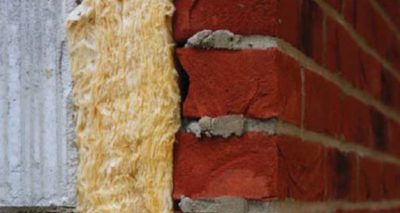
Gaps and draughts around skirting boards and floors are simple to fix with a tube of sealant bought from any DIY store. However, you need to remember that floorboards will rot without adequate ventilation, so don’t block under-floor airbricks in your outside walls.
Once you have excluded draughts from in and around your floors, you can go a step further and properly insulate under the floor.
Older homes are likely to have suspended timber floors, which can be insulated by lifting the floorboards or from under the floor if the area below is deep enough and laying mineral wool insulation supported by netting between the joists.
Many homes, especially newer homes, will have a ground floor made of solid concrete. This can be insulated too with rigid insulation laid on top.
You don't need to insulate the floors of upstairs rooms in your home if they are above heated spaces (like the living room). But you should think about insulating any floors that are above unheated spaces such as garages, as you could be losing a lot of heat through those.
Insulating under the floorboards on your ground floor will save you around £60-£75 a year.
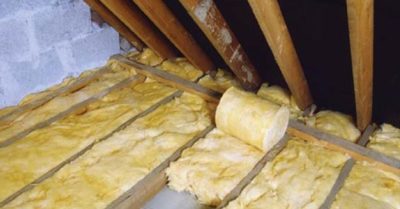
Dampness and Condensation
Is your home damp? Damp can cause mould to grow on walls and furniture and make window frames rot. Damp, cold housing encourages the growth of mould and mites, as mites feed on moulds and can increase the risk of respiratory illnesses in some people.
Some damp is caused by condensation and reducing the level of condensation to a minimum can help to reduce the risk of dampness and mould growth.
The increased incidence of condensation in today’s buildings is the direct result of changes in modern living conditions which have led to warmer and more comfortable rooms.
In many of our properties, traditional open fires have been replaced by central heating systems and double or triple glazing has been installed. These modern aids to home comfort have created rooms which are warmer but often have less ventilation and fewer air changes.
Condensation is the water which results from the conversion of water vapour in the atmosphere.
The air which surrounds us in our homes always contains water vapour, which is usually invisible. A typical example is the steam cloud from a kettle, which rapidly becomes invisible – it has in fact been absorbed into the atmosphere.
When moisture (water vapour in the air) comes into contact with a cold surface like a window or wall it condenses into water droplets. This also occurs in areas where air does not circulate well.
Some causes include:
- The use of bottled gas and paraffin heaters
- Steam from the cooking of food in the kitchen
- Steam from bathing and washing
- Insufficient ventilation within the house
There are steps you can follow which will reduce and possibly eliminate condensation within your house:
- Use extractor fans where fitted e.g. kitchen and bathroom
- Avoid using paraffin or flueless bottled gas heaters
- Cover pans
- Do not block up vents
- Avoid drying clothes in your house. If this is not practical then the door of the room in which the clothes are drying should be kept closed and the room ventilated to the outside air. Also, consider using a energy efficient dehumidifier.
- Make sure your tumble dryer is vented to the outside (if it is not a condensing type)
- Open windows (when convenient) to let air circulate
- Where possible keep furniture clear of walls to allow air to circulate
- Keep your house warm and use trickle ventilation on windows (where fitted)
Wipe away any condensation on windows or walls etc. with a dry cloth. To eliminate mould, wipe down walls and window frames with a fungicidal wash approved by the Health and Safety Executive. If you deal with the basic problem, mould should not reappear.
Although condensation is the most common cause of damp there are other visible factors. These include leaking pipes, overflows, spillages from blocked gutters and roof leaks (missing or cracked tiles or slates). It is important that these defects are rectified as soon as possible.

